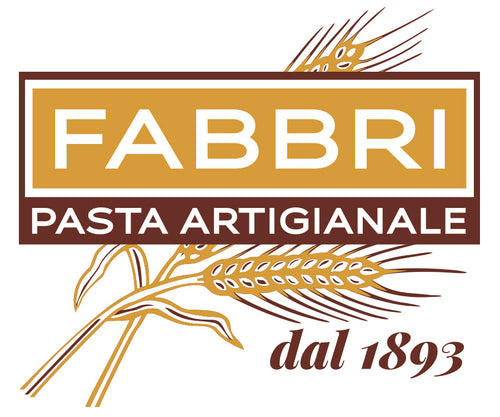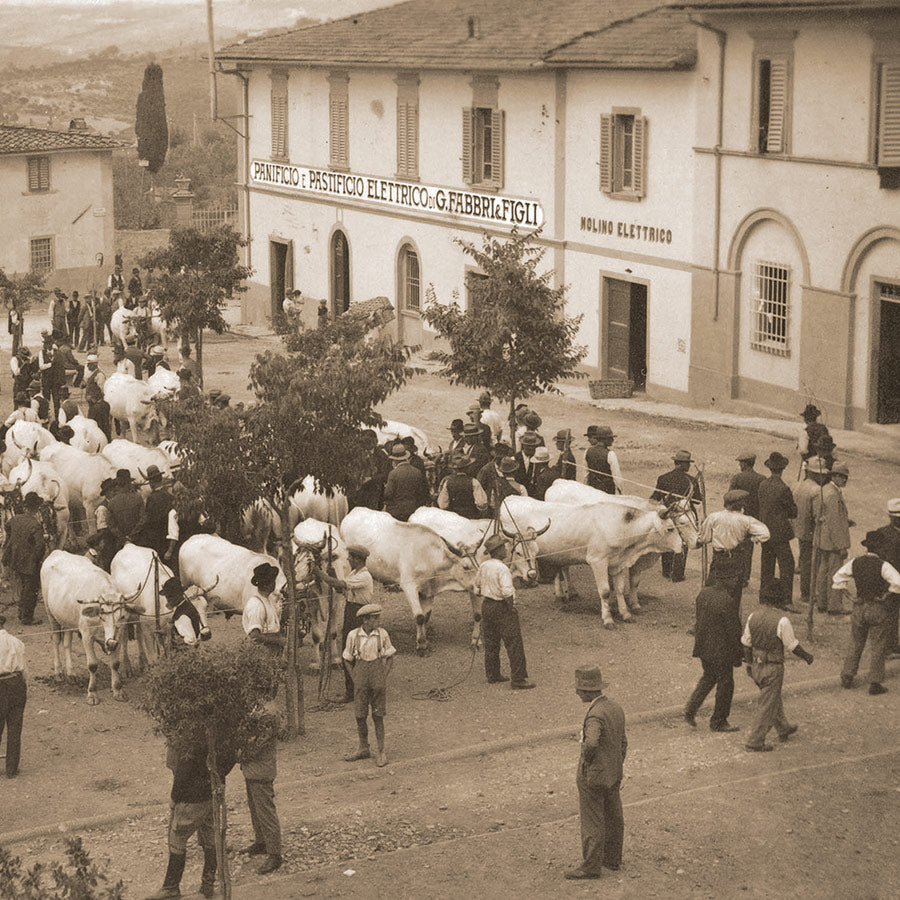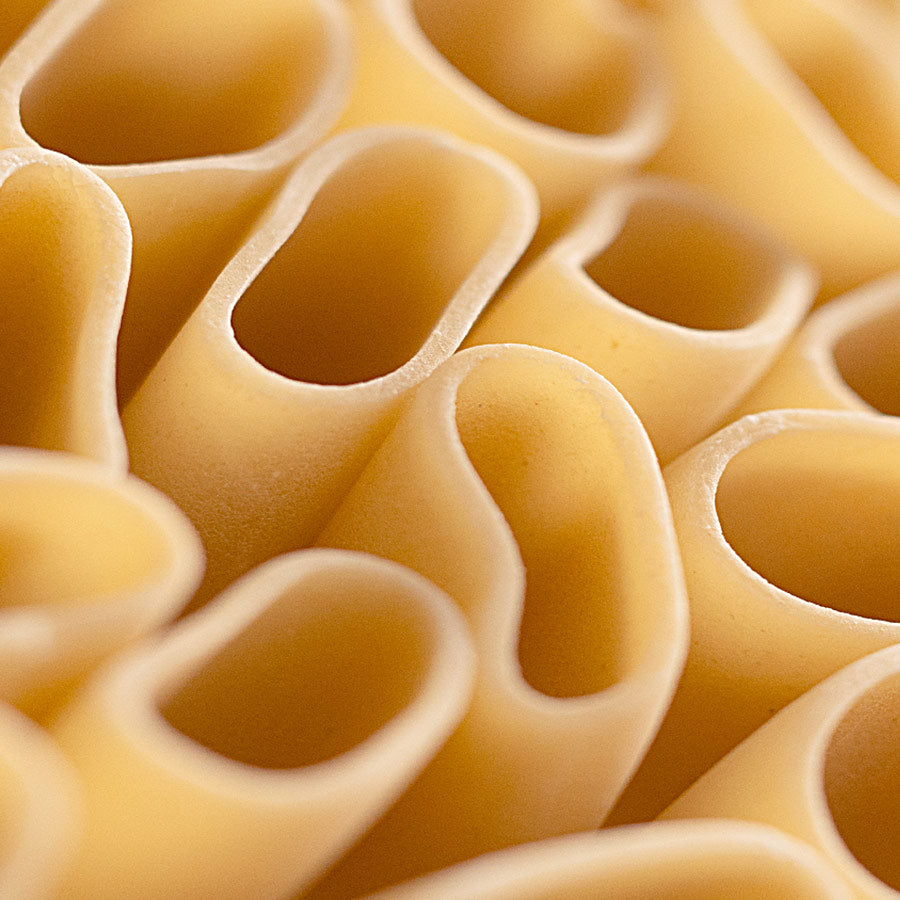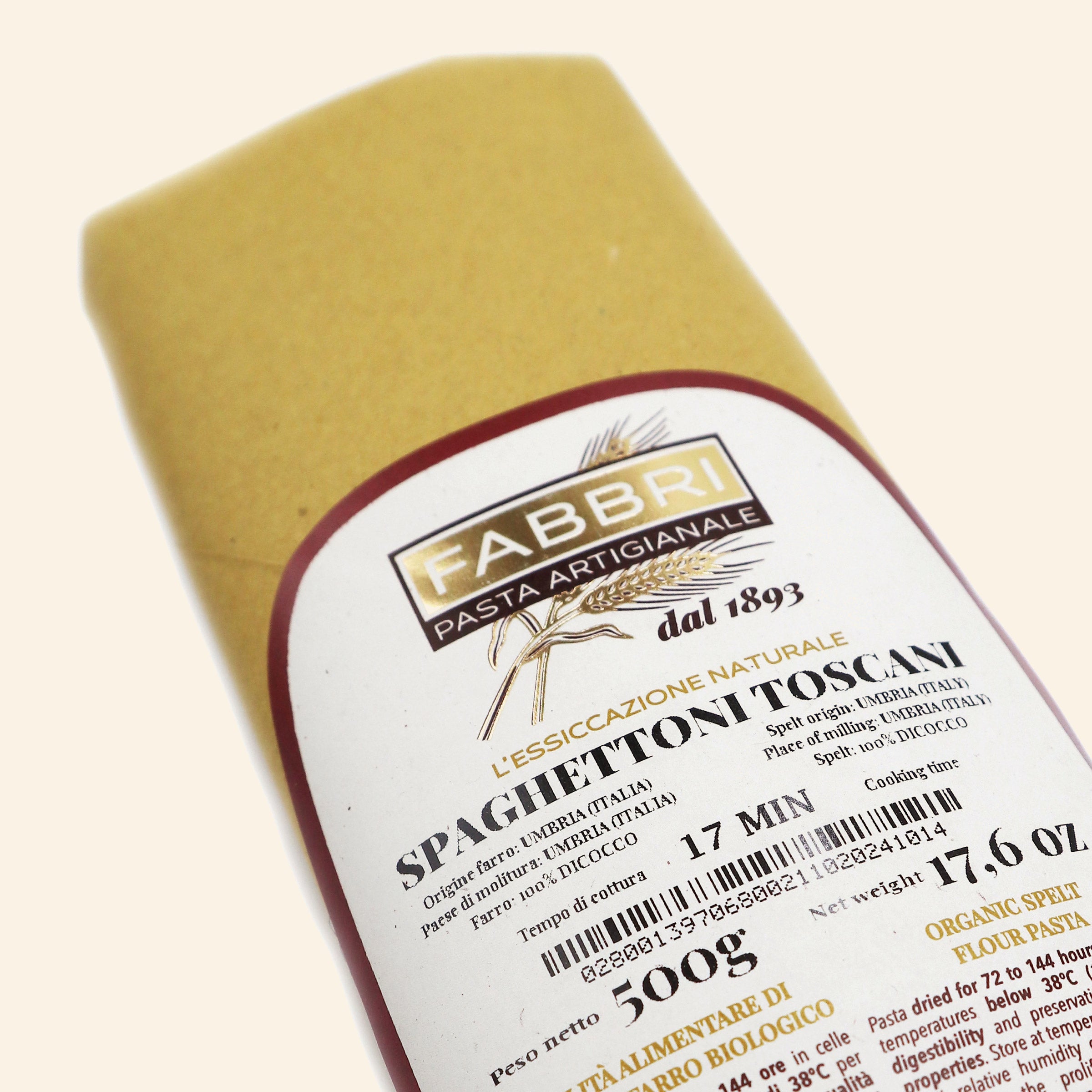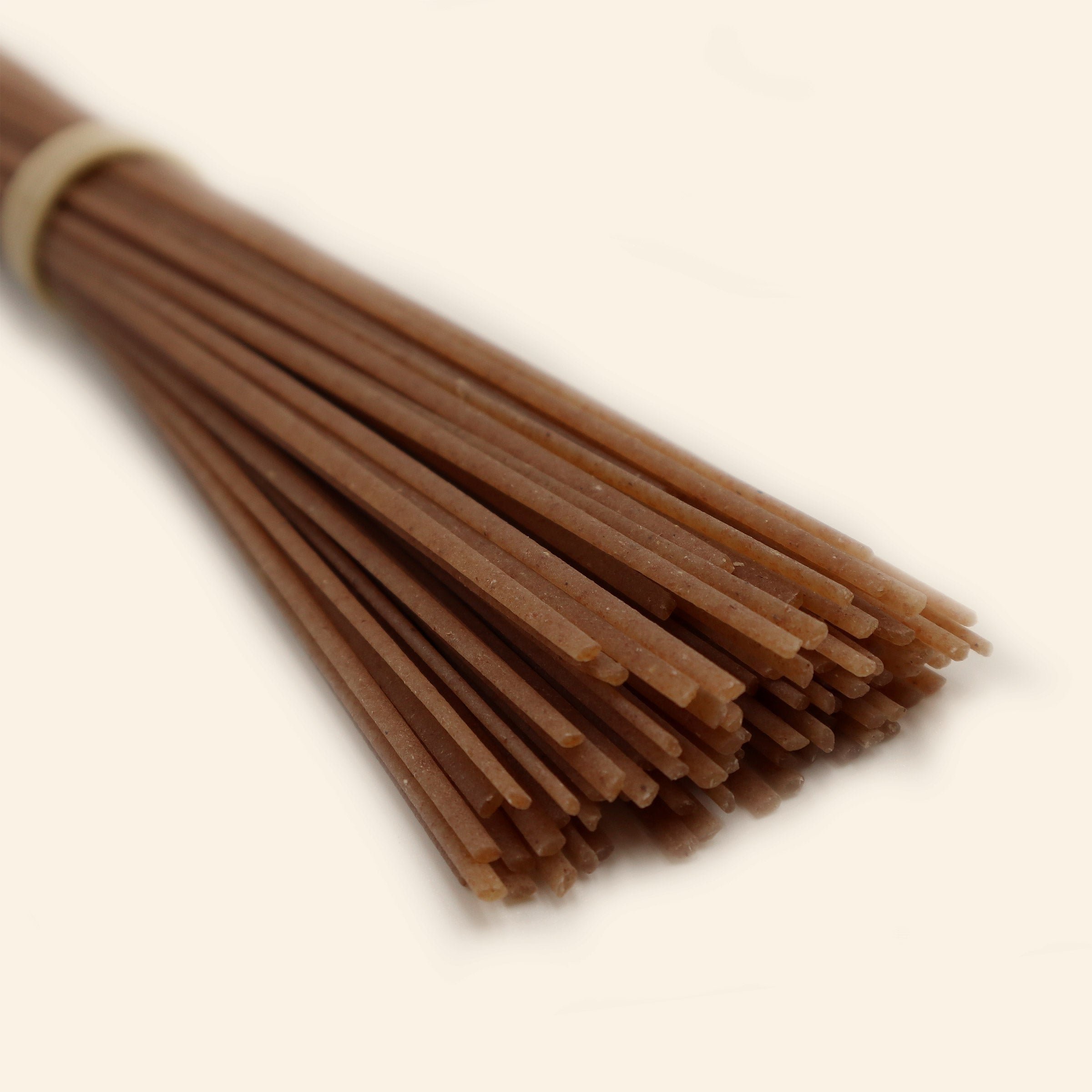Hand-Rolled Spaghettoni Toscani 100% Organic Emmer wheat
Pasta was traditionally sold by pasta makers wrapped in sheets of cartapaglia, a paper made with straw and wheat scraps. In the Antica Bottega del Pastificio Fabbri, we used to wrap our long pastas as we wrap our Spaghettoni collection today.
Organic emmer pasta, 100% emmer (Origin: Tuscany, Lazio, Umbria) . Rough surface, given by bronze drawing.
DRYING TIME: Pasta dried for 6 days ( 144 hours ) at temperatures below 38° centigrade.
IDEAL WITH: “A drizzle of extra virgin olive oil, a little pepper and a pinch of cheese, this is the best way to taste Tuscan spaghettoni” says Giovanni Fabbri, the fourth owner of the company. Naturally, spaghettone can be combined with many different sauces, simple and slightly more complicated: cheese and pepper, a nice ragù or even with garlic as is done for example in Tuscany.
Since our pasta is artisan…
We recommend storing it at temperatures below 18°C and with a relative humidity of 65%, or directly in the refrigerator to discourage the proliferation of insects.
The cooking time may vary slightly depending on the quantity and quality of the protein contained in the wheat after the pasta making. Indeed, the wheat's growth is influenced by atmospheric conditions and the type of soil. This is why the semolina obtained is always different and can affect the pasta-making process and therefore the characteristics of the pasta: cooking, the toughness of the gluten, the amount of starch released into the pot, etc.
The irregularities in size, cut and colour are typical of traditional artisan pasta.
Our labels are applied by hand.
100% Italian organic ancient grains
For 5 generations, the Fabbri Method has paid attention to the entire supply chain: from the choice of the best wheat , to delicate pasta making and drying at natural temperatures. All with the original machinery and bronze dies from the 1950s.

Our pasta
Our
artisanal pasta
100% Italian organic grains and very low temperature grinding.
Our company uses 100% Italian organic grains chosen based on the nutritional properties , quantity and in particular the quality of the gluten .
